When I joined Outfunnel as head of marketing in June 2020, I was welcomed with a 100-day plan to set me up for success and 3 well-defined goals:
- Building a brand, which mainly means awareness, associations, and trust, in our case. Because that’s the most effective marketing play in the long term.
- Driving leads, which means traffic that converts into signups for us. Because this impacts numbers most in the short run.
- Increasing engagement of existing customers and new signups. Because this increases conversion and lowers churn, it’s critical for both the short and long term.
While the world of CRMs and marketing automation tools wasn’t my home turf, I knew a thing or two about B2B marketing, so I rolled up my sleeves and got to work.
In this article, I share our playbook of how we do marketing that serves the first two goals mentioned above (the third one has already been covered pretty well previously). Follow the links or read on:
- Brand-building
- Capturing demand with inbound marketing
- Demand generation with partner marketing and growth marketing
Sounds good? Let’s dig in.
1. Brand-building
“People don’t buy goods and services. They buy relations, stories and magic.”
Seth Godin
Many downplay the importance of brand-building in B2B marketing, while in fact, it sits at the foundation of everything in marketing, second only to the product or service. Done well, a strong brand multiplies the results of absolutely everything else you do in marketing.
The thing is, building a strong brand takes a lot of resources and time – as a result, its ROI is difficult to measure. And that’s why it’s easy to deprioritize brand-building, especially when your budgets are limited and your team small.
I’ll be honest – I don’t think we’ve done a stellar job at brand-building at Outfunnel, but we have made sure the core pieces of the brand are well-refined: our messaging and our visual identity.
For the former, we have gone through rounds of positioning and messaging exercises, to make sure we’re clear about what Outfunnel does. For the latter, we worked with a world-class designer to find our current logo, brand colors, and we keep investing in unique visuals that make us stand out.
So, let’s go over our key brand-building strategies and what we have learned from doing them: unique content, visuals and fun “stunts”.
Unique content
If there’s one thing I’ve learned about content marketing, it’s that the biggest successes come from content that is unique to you. This is especially true for when it comes to brand-building.
In Outfunnel’s case, all content that has worked well to build awareness and associations has been one of three: original research, practical case studies or deep dives.
Take the practical case study about how we saved 80% of our time by automating user onboarding for example. It’s a useful piece of content that shares pointers based on first-person experiences, on the topic that we’re uniquely positioned to write about: bridging the gap between sales and marketing.
The Hacker News community loved it so much that this is what happened with our traffic after we shared it with them in late 2019:

Another piece that garnered a lot of attention on Hacker News was a deep dive into connectors that changed the world, from Velcro and superglue to web APIs. While most connectors are very far from what we do, Outfunnel is a type of connector as well, so the piece worked well to create such associations among the readers.
One of our biggest investments into content has been our annual original research report, the Revenue Marketing Report. In the report, we look at the state of sales and marketing alignment at SMBs – something that no one else in the world has reported on in recent years.
The research findings (combined with a decent amount of press work and outreach, of course) got us coverage in some well-known industry publications such as MarketingProfs, and social media love from people like Scott Brinker.
Unique visuals
As a marketer, it can be tempting to resort to stock images or to commission volumes of illustrations at low cost on platforms like Fiverr or Upwork. We’ve taken a different approach at Outfunnel, and I would say it has paid dividends.
Beyond our logo, some of our key visual assets are illustrations that have been drawn just for us by Kaisa Holsting, a freelance graphic designer name. We use them both in marketing materials and inside our product, and they help create a visually identifiable brand that is unlike any other.

Not only have we received numerous comments on our blog posts complimenting the visuals, we’ve had other sites borrow (read: steal) them.
Fun “stunts”
B2B marketing does not have to be boring. And when you’re brand-building, one of the things that work best is to create emotions. Some of our most successful “stunts” have involved a decent amount of humor.
One such example is our April Fool’s joke on integrating Salesforce and TikTok, featuring a landing page to a product that did not in fact exist.
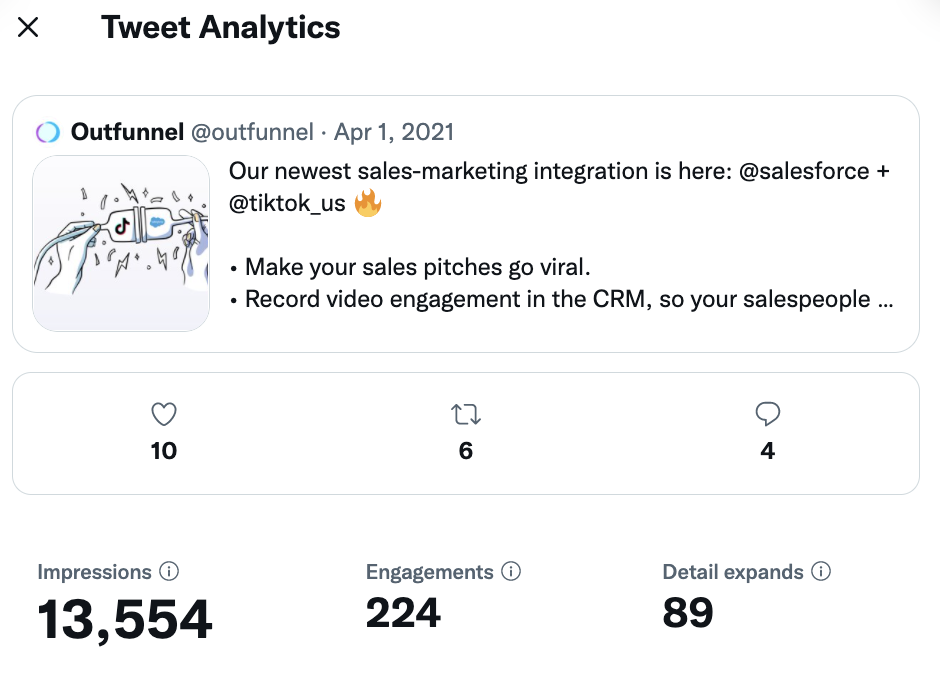
Not everyone got the joke (we still get an occasional signup from the landing page), but it definitely caught the attention of many.
Another well-received “stunt” was putting out a tongue-in-cheek press release. You see, for a while, we positioned ourselves as The world’s most boring marketing tool. So, after closing our most recent funding round, we put out a press release on how we raised “only” €1M to automate something boring.
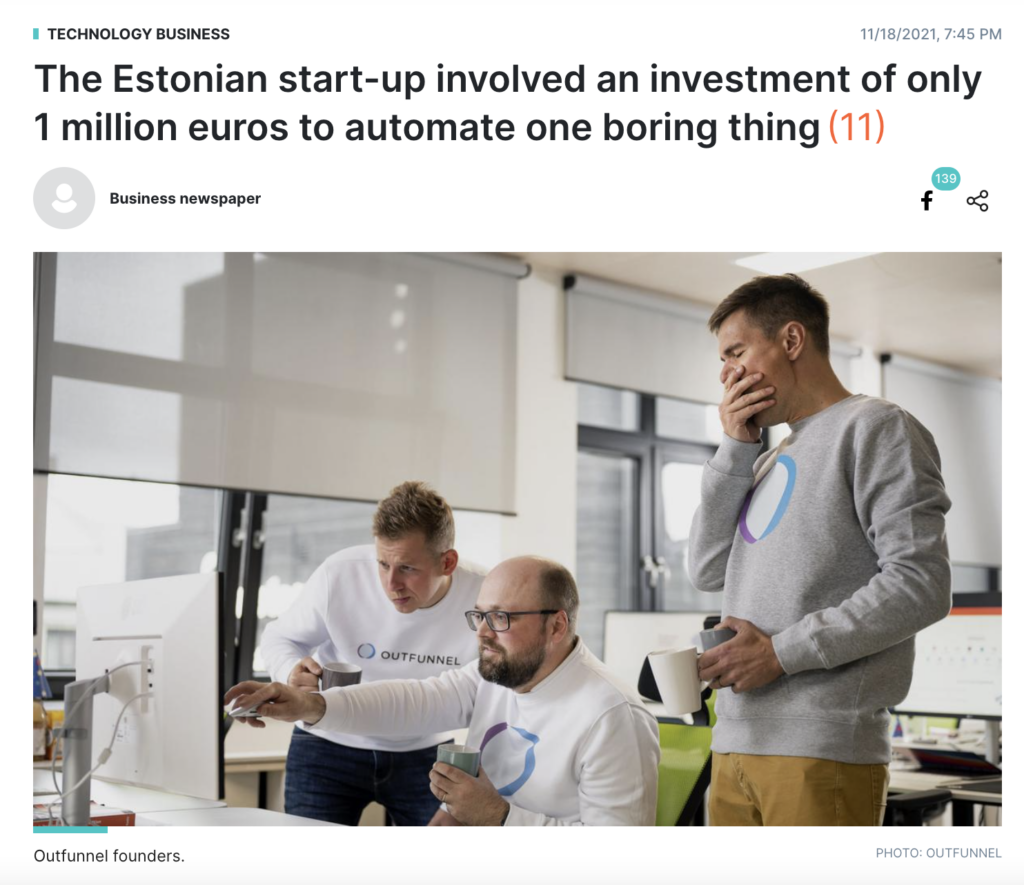
Outfunnel’s founders are Estonian, so our humor tends to be heavy on sarcasm. The local media outlets were happy to spread the news.
2. Capturing demand with inbound marketing
Outfunnel solves a problem that is not very new: disjointed sales and marketing data. So, to an extent, the market is definitely aware of the problem we’re solving. However, to date, most solutions available to this problem are all-in-one suites that come with a monthly bill that is in the 3-figures (or more), which is out of reach for SMBs.
That said, there is compelling evidence that salespeople and marketers increasingly want to choose their preferred tools even when they’re using an all-in-one platform, and 3rd party connectors that integrate data from various tools have been on the rise for at least 10 years now.
So, beyond problem-awareness, there is some solution-awareness as well, as people seek out 3rd party solutions to connect their preferred sales and marketing tools. We think the problem and solution-awareness are lower than they could be – but more on that later in the article.
Capturing the demand that is there is like picking the low-hanging fruit for us, as there’s little competition to Outfunnel in our niche (more on that in this article on marketing integrations). And how do we capture demand? With inbound channels, like SEO, SEM, directories, and comparison sites, and optimizing our conversion rates.
I’ve spent most of my marketing career working on inbound marketing, so I could write an entirely separate article about the ins and outs of that. Here, I’ll summarize our key inbound channels in three sections: organic traffic, paid traffic, and directories.
Findability on directories
When Outfunnel was founded in 2018, it served one very specific use case: integrating Pipedrive and Mailchimp. As such, it was only relevant to a relatively small group of companies: those that use Pipedrive as their CRM and Mailchimp as their marketing automation tool.
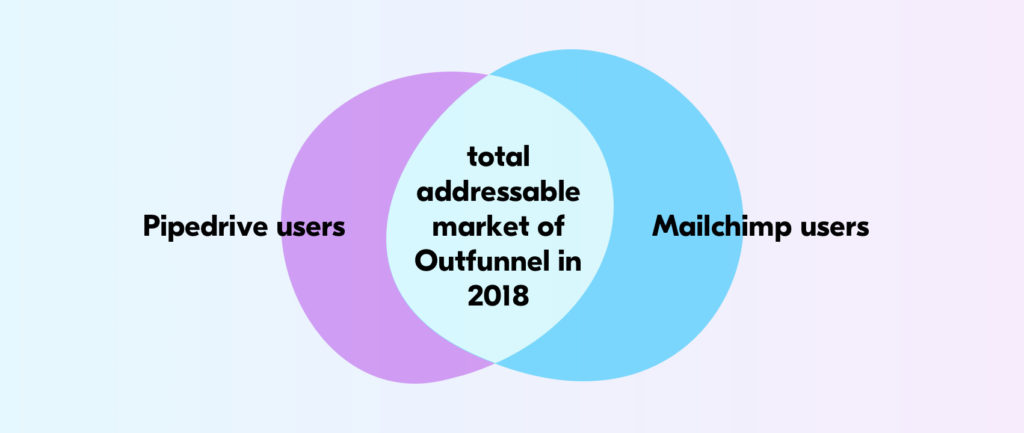
And how do you reach these companies the best? Well, a good place to start is the already-established channels and platforms of Pipedrive and Mailchimp.
In general, the term “directory” refers to a site or resource that lists products and services, to help people find and compare solutions.
For Outfunnel, the best type of directories has proven to be App marketplaces, such as Pipedrive Marketplace or HubSpot’s App Marketplace. And it makes sense – when a company implements a CRM system, they look at the CRM’s own resources to find the best ways to put the CRM to work for them.
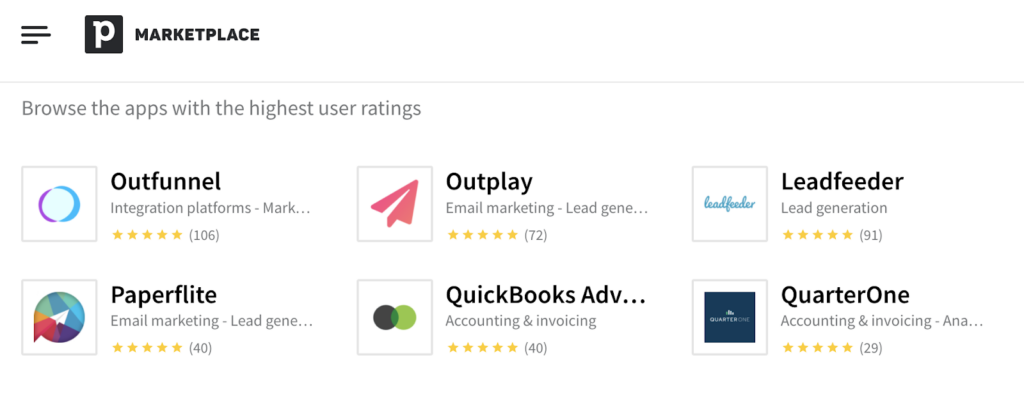
We’ve also had some success with more generic directories, such as Capterra or G2, but as Outfunnel’s target audience has been limited to the users of specific other tools, it has not made sense to invest a lot in those channels yet.
Organic traffic
It’s every inbound marketer’s dream to be in the #1 Google search result spot for their target search keywords. To maximize relevant organic traffic to Outfunnel’s website, we have invested a lot of resources into publishing great content on our blog, creating hundreds of app connection landing pages, as well as into building internal and external links to our site.
Now, not all of our content serves the goal of capturing demand, but covering the high-intent, solution-aware demand part of our target search keywords (such as “Pipedrive-Sendinblue integration” or “Pipedrive email marketing”) has been priority number one. Why? Because that’s how we make sure people looking for something like Outfunnel find us.
At the beginning of each quarter, we review our target keywords – a list we have created after doing keyword research to identify the ones that are closest to what Outfunnel does as a product. And on a monthly basis, we track how we’re doing using Ahrefs’ Rank tracker and Google Analytics.
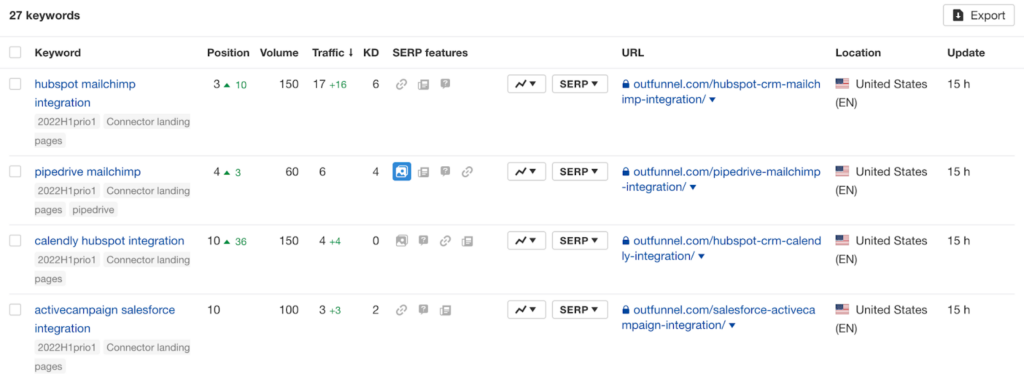
So, how have we been doing? Well, since we doubled down on building sales-marketing app integrations, we have been focused on building traffic to our integration landing pages.
In 2021 alone, we grew the monthly organic traffic to 10x:

These traffic volume numbers probably do not blow your mind – but bear in mind that these are super high intent visitors, who are looking for exactly the integrations we offer.
In capturing demand with content, the second priority has been generating traffic to content that relates to problem awareness (e.g. “sales and marketing integration”), even if it’s unclear whether the person behind the search uses the tools Outfunnel integrates with.
While the solution-aware content and landing pages are optimized for signups to our tool, then the problem-aware ones are optimized for signups to our marketing lists.
Sidenote: generating organic traffic successfully requires backlinks from reputable and relevant sites. In our experience, backlink-building techniques can only go so far – the easiest way to earn really good backlinks is to put out unique and high-quality content (what Tim Suolo of Ahrefs calls Level 4 and Level 5 content). And well, the search engines will also love your 100% unique content more, because:
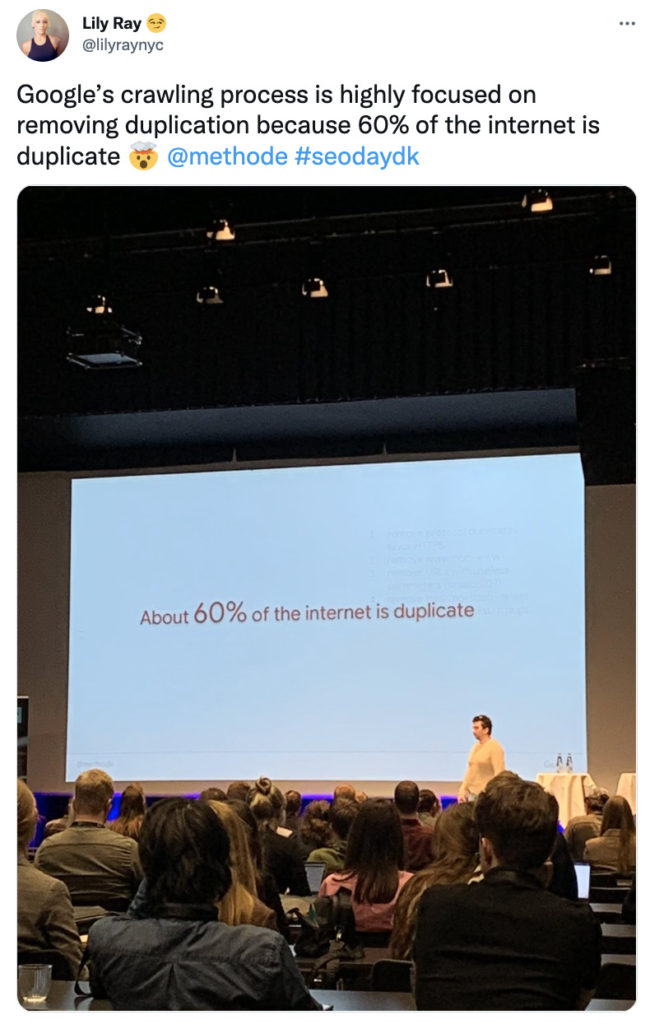
Paid traffic
If there’s any demand for the problem you’re solving with your company, there’s likely a competitor who’s already bought the #1 spot on Google’s search with their advertising dollars.
In Outfunnel’s case, search ads have made up the majority of our advertising budget since day one. (Or well, even before day 1, but that’s a separate story.)
While we do not have a performance marketing expert on our team, our team’s combined knowledge has been good enough to set up the ads – and we buy the time of expert consultants occasionally to audit and improve our ads setup.
3. Demand generation with partner marketing and growth marketing
Inbound marketing is great, but it depends on the target customer experiencing a trigger event to start the buying journey. For example, sending marketing emails to the wrong list and feeling the pain of embarrassment might be such a trigger event. Or exporting-importing lists manually and realizing how tedious it is.
What about that part of the target market that is going about their (working) life, completely unaware their sales and marketing tech setup could be improved? That’s where demand generation comes in.
In essence, demand generation is all about raising awareness about the problem you’re solving and building trust and associations to make sure you’re the one customers turn to when choosing a solution for the problem.
For us, the channels that have worked best for demand generation are partner marketing and growth marketing.
Partners
Over time, we have built great relationships with our ever-increasing list of integration partners. We do this mainly by collaborating on content, such as organizing webinars or blog articles that benefit our customers.
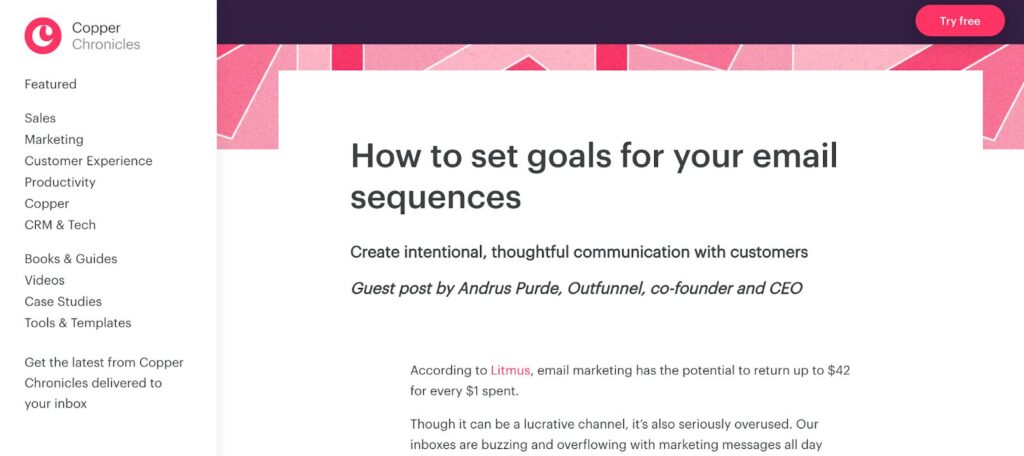
It’s worth noting that like any relationship, partnerships take time to build. Unless you have pre-existing warm contacts at the partner companies, you have to start by providing some real value before you go for an ask.
However, partnerships are generally well worth the investment. In our most successful partnerships, we are not just well-presented anywhere on their site and support documentation where sales-marketing integrations are mentioned, but we also have the vocal support of their support engineers, community managers and salespeople – the powerful “word of mouth” referral marketing that no advertising dollar can buy.
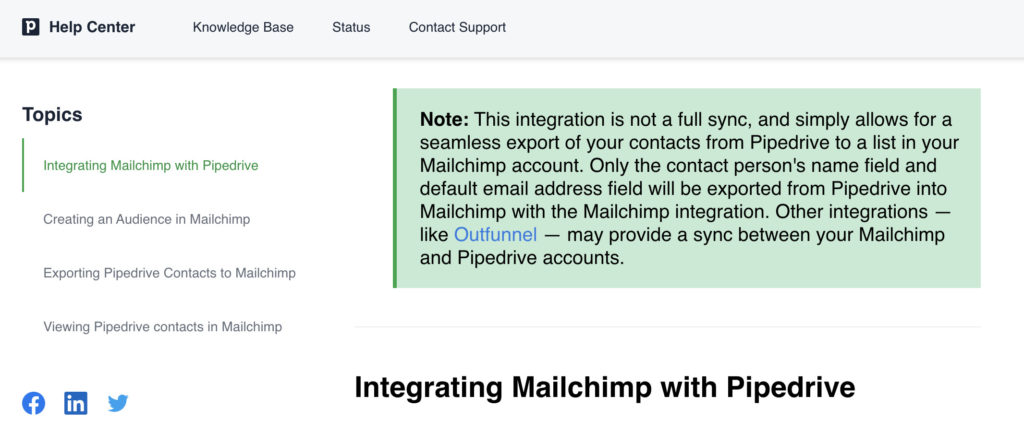
Occasionally, we also venture beyond our integration partners – as long as the audience of the content matches our target audience: B2B salespeople and marketers.
Growth marketing
We wouldn’t be a true technology company if we didn’t try to punch above our weight every now and then. In our case, “Growth marketing” is almost a catch-all term for experimenting with marketing channels and strategies that do not fall into any of the above categories.
While we have run a lot of growth experiments, there’s one I would highlight here – cold emails – as it has yielded the best results when measured against our internal (R)ICE prioritization formula (read: it has proved the best bang for the buck).
Now, cold email is definitely not your typical marketing channel. It’s usually the tool of business development representatives. Either way, as an outbound channel, it can be extremely effective.
The caveat? You have to nail lead research to make this channel work for you. We’ve written about one such cold emailing experiment in the past, and recently we’ve put BuiltWith and numerous lead enrichment tools to use to build hyper-targeted lists of our ideal customers.
While this article did not cover everything we do in marketing, it gives an overview of the main strategies that have worked well for us.



